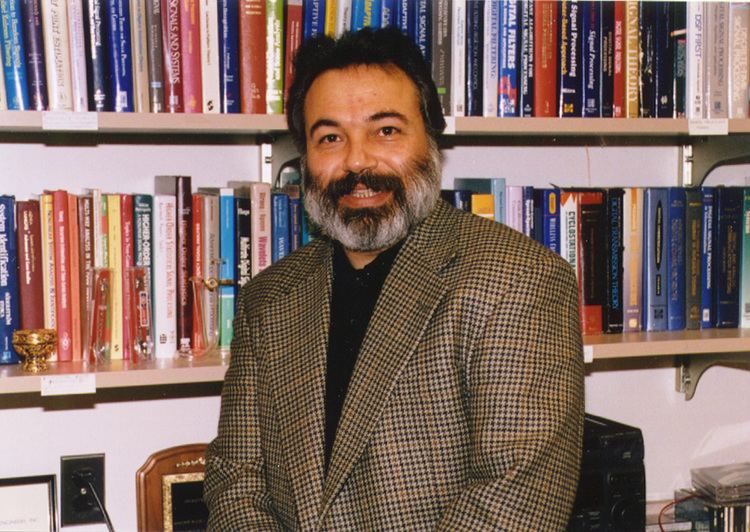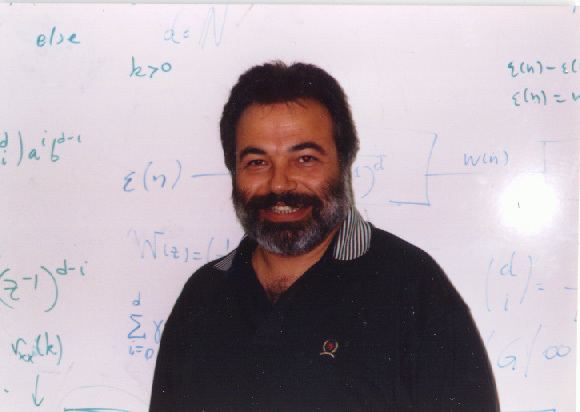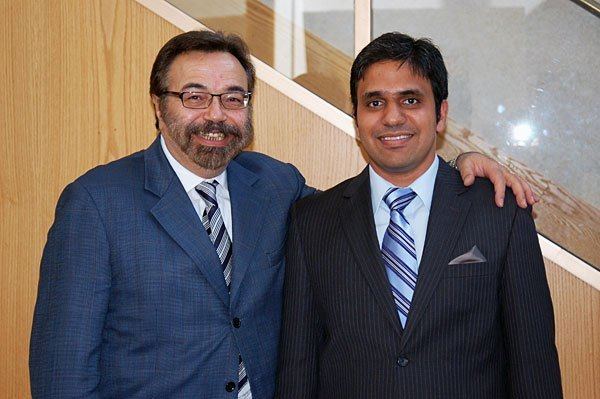Name Georgios Giannakis | ||
 | ||
Ece 804 fall 2012 lecture 005 with dr georgios b giannakis
Georgios B. Giannakis (born February 27, 1958) is a Greek–American Professor, engineer, and inventor. At present he is an Endowed Chair Professor of Wireless Telecommunications with the Department of Electrical and Computer Engineering, and Director of the Digital Technology Center at the University of Minnesota.
Contents
- Ece 804 fall 2012 lecture 005 with dr georgios b giannakis
- Early life
- System Identification Using Higher Order Statistics
- Linear Constellation Precoding
- Resilient Block Based Modulation
- Multicarrier Modulation
- Commercialization
- Awards and Honors
- Books
- Selected Publications
- References

Giannakis is internationally known for his work in the areas of statistical signal processing, distributed estimation using sensor networks, wireless communications and cross-layer network designs, on topics such as auto-regressive moving average system identification using higher-order statistics, principal component filter banks, linear precoding, multicarrier modulation, ultra-wideband communications, cognitive radios, and smart grids. Seminal work includes the development of linear precoding wireless communication systems, which provided a unified approach for designing space-time block codes that achieve data high rates and reliability, and proposal of zero-padding as an alternative to the cyclic prefix for multi-carrier communication systems, which had impact in the multi-band ultra wide band standard. Current research focuses on big data and network science with applications to social, brain and power networks with renewables.

Giannakis has left a substantial academic legacy as an advisor of more than forty Ph.D. dissertations and mentor of more than a dozen postdoctoral researchers at the University of Virginia and the University of Minnesota.

Early life
Born in Piraeus and raised in Corinth, Greece, Giannakis received his MA in Electrical Engineering from the National Technical University of Athens in 1981, his M.Sc. in Electrical Engineering from the University of Southern California in 1983, his M.Sc. in Mathematics from the University of Southern California in 1986, and his PhD in Electrical Engineering from the University of Southern California also in 1986. After completing his Ph.D., he started his academic career at the University of Virginia in 1987 and moved to the University of Minnesota in 1999. As a professor, he built a distinguished research group making contributions in many areas including statistical signal processing, wireless communications, sensor and mobile adhoc networks and data analytics.
System Identification Using Higher Order Statistics
Giannakis established an important result in the identification of a linear system based only on its output. He showed that non-minimum phase and non-causal parametric auto-regressive moving average models can be uniquely recovered via higher-order statistics. Only minimum phase models can be recovered if second-order statistics of the output are used.
Linear Constellation Precoding
Giannakis and collaborators made fundamental contributions to linear precoding in wireless communication systems. One main contribution was to show how block-based linear precoding could transform a frequency-selective MIMO channel into a set of parallel frequency-flat channels. Another main contribution was to develop a unified approach to designing space-time block codes in MIMO channels. Such codes enable maximum diversity and coding gains at full rate (1 symbol per channel use) for any number of transmit-receive antennas. Linear precoding is widely used in commercial wireless systems like IEEE 802.11n and 3GPP LTE.
Resilient Block-Based Modulation
Giannakis and collaborators developed a multicarrier communication technique that is resilient to frequency-selective multi-user and inter-symbol interference. He showed that designed linear multicarrier precoding combined with a block spreading operation together render the user signature matrix at the receiver well-conditioned, without power control or bandwidth over-expansion. This result shows that block processing of communication signals becomes an important dimension that can improve communication performance without altering power or bandwidth.
Multicarrier Modulation
Giannakis and collaborators developed several significant innovations in multi-carrier modulation. One important development was the use of zero-padding instead of a cyclic prefix. Using a zero-prefix has advantages in the application to multi-band OFDM in ultra wideband because it extends the coverage range by avoiding power back-off at the transmitter.
Commercialization
Multiple lawsuits were filed by the University of Minnesota against Sprint, T-Mobile, Verizon, and AT&T based on Giannakis’ patents.
Awards and Honors
Giannakis is also a co-author of numerous best paper awards including the IEEE Communications Society’s Gugliermo Marconi Prize Paper Award for work on linear precoding, the 2003 IEEE Signal Processing Society’s SP Magazine Best Paper Award for a paper on wireless multicarrier communication, an IEEE Signal Processing Society’s Best Paper Award in 2001 for work on parallel factor analysis in sensor array processing, an IEEE Signal Processing Society’s Best Paper Award, 2000 for work on designing filterbank precoders and equalizers.
